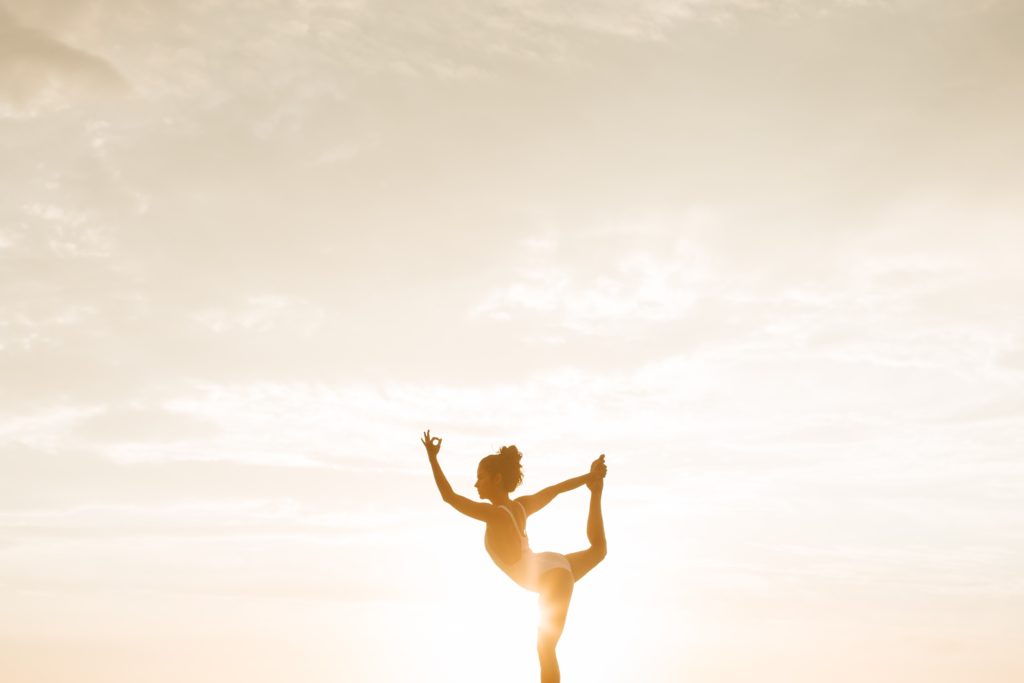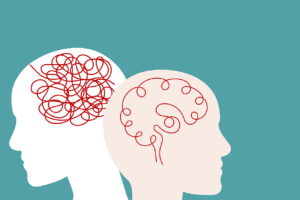
The power of yoga
Close your eyes, relax, and take a deep breath in…
Every yoga session tends to start in this manner: breathe, relax, and be aware of your body. That’s all yoga is — or at least many people have been led to think so.
Yoga is an ancient practice focused on breathing, meditation, and physical exercise to integrate the body, mind, and spirit into one activity (Cherup et al., 2021). Its original goal was to prepare practitioners for long periods of meditation, but the core principles behind it can be beneficial for anyone. Although yoga has been around for thousands of years, it only made its way into Western medicine in the last 50. Yoga has been used as psychotherapy for a number of different conditions including anxiety, obsessive compulsive disorder, asthma, osteoarthritis, heart disease, high blood pressure, and more (Frey, 2003). It may seem strange to think that doing the warrior pose could be a treatment for all these conditions. So why yoga?
Yoga has a direct focus on the body and its movements. It requires the participant to become more aware of their limbs and movements to form certain poses. There are many varying styles of yoga that range in difficulty. Research suggests that yoga can improve general wellness by reducing stress, relieving pain, aiding in weight loss for overweight individuals, relieving menopause symptoms, and so much more (National Center for Complementary and Integrative Health). In particular, yoga meditation requires individuals to sit and meditate, thinking about a position, their body, and the motion of their body forming the pose. Practicing yoga is calm with slow movement that activates specific muscle patterns, and its gradual progression allows an individual to connect to their body and make conscious physical movements. Let’s dive into an example to see how the benefits of yoga can play out in real life.
Parkinson’s disease is a neurodegenerative disorder that affects the substantia nigra portion of the midbrain by targeting dopamine receptors, leading to an impaired ability to produce dopamine (Mayo Clinic). The substantia nigra is responsible for motor functions, so when there is a lack of dopamine, motor functions start to decline. Individuals with PD can experience a wide range of movement-related symptoms, such as tremors, slowed movements, stiffness, and lack of muscle control, making daily movement a struggle. PD also comes with numerous nonmotor symptoms such as fatigue, sleep disturbances, decreased self-confidence, mood disorders, and cognitive changes that affect daily life (Walter et al., 2019). Despite all these symptoms, it is possible for people with PD to live functional lives by managing their symptoms. PD patients are often treated with pharmaceuticals, but research suggests that yoga may provide massive improvements in motor and nonmotor functions (Cherup et al., 2021).
A recent study explored the benefits of yoga on nonmotor symptoms of PD by measuring participants’ health related quality of life in order to determine the effects that yoga can have on improving mentality in PD patients (Walter et al., 2019). 15 participants attended 60-minute Hatha Yoga sessions that focused on balance, strength, and mobility over an 8-week period. Participants were guided through poses by a yoga therapist who aided in modifying positions based on participants’ skill levels. They were given several different instruments to aid their session, and there were two research students present to assist when needed.
Schmid and colleagues found that balance confidence in individuals with PD increased, fatigue lessened, and confidence ability to manage falls increased. These findings allow for individuals with PD to live life more easily and comfortably. Although symptoms do not disappear, the confidence that comes with yoga makes it much easier to get up and at ‘em.
In another study, 33 individuals with mild to moderate PD were randomly placed into two different movement programs. The first was a yoga meditation program and the other an already established proprioceptive training program for individuals with PD. Each program met twice a week for 45 minutes over a 12-week period. The yoga meditation group was asked to sit with their eyes closed and focus attention on a certain spot in the body, starting at the toes and working up to the head. The participants were then guided through 15 different poses in a mindful practice, known as motor imagery, where they assessed their bodies and its parts before moving onto the next pose. The proprioceptive group also worked on a number of balancing exercises.
The results of the study were significantly in favor of the yoga meditation group. Nearly 40% of the yoga meditation group finished all 24 classes, whereas only 18% of the other group attended all their sessions.
While these examples focused on the benefits of yoga for patients with Parkinson’s, anyone can engage in a yoga practice to experience positive effects like these. Practicing yoga does not take much. Here are 5 steps for new yogis adapted from Yoga International:
- Find a community
- It is a lot easier to learn when you have someone who knows what they are doing by your side. A quick Google search for “yoga studios near me” should solve that. Fort Collins offers its own modified yoga classes through the Recreator, available here.
- Practice makes perfect
- Be consistent. Stick with it. Don’t give up and push yourself. If one week you find yourself struggling to have control over your breathing, think about what you need to change, and work the next week to implement those changes. The benefits are worth it.
- Listen to your body
- Although you should always be challenging yourself, do not push too hard. Listen to your body and understand what you are feeling. Do not go for an intense pose to show others you know what you’re doing. Stick to what is comfortable and trust that improvement will come with time.
- Do not compare yourself to others
- This one is pretty straightforward. We all start out at different skill levels, with different strengths, and different weaknesses. Focus on yourself, set goals for yourself, and focus on that rather than how you compare to others.
- Speak up
- If you are struggling to quiet your mind or complete a certain move or breathing technique, ask for help! People love to share what they know, so do not be afraid to ask those in your community for a little advice.
So search up your local yoga studio, grab yourself a mat, and take a deep breath out.
ABOUT THE AUTHOR
Grace Weintrob is a junior majoring in Communication Studies with a minor in Stage, Sports, and Film Production at CSU. She is currently working as the digital media intern for the Columbine Health Systems Center for Healthy Aging.
References
Cherup, N. P., Strand, K. L., Lucchi, L., Wooten, S. V., Luca, C., & Signorile, J. F. (2021). Yoga Meditation Enhances Proprioception and Balance in Individuals Diagnosed With Parkinson’s Disease. Perceptual and motor skills, 128(1), 304–323. https://doi.org/10.1177/0031512520945085
Mayo Clinic. 2021. Parkinson’s disease – Symptoms and causes.
National Center for Complementary and Integrative Health. 2021. Yoga: What You Need to Know.





